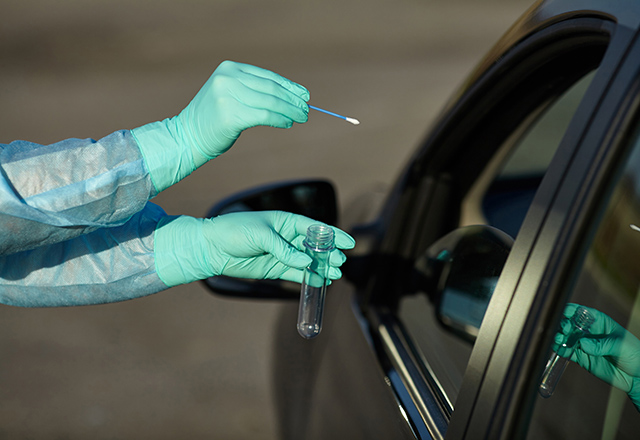Guest post by Megan F. Hunt, a student at the Johns Hopkins University School of Medicine.
The curriculum at the Johns Hopkins University School of Medicine emphasizes a patient-first mentality, reminding us over and over as medical students to both identify with the patient experience and examine what our contribution as providers will be to their integral moments. In this way, patient testimonials create the context by which we understand a disease and attempt to deliver treatment. Yet, no testimonial is as powerful as personal experience.
During this period of social distancing, our clinical rotations are indefinitely suspended. My significant other and I have been following stay-at-home orders with my family in Charleston, South Carolina, while completing online electives. In late March, we both came down with a low-grade fever, cough and sore throat. Although we had spent the last several weeks at home in contact with only my family, we worried about the implications of our symptoms. As third-year medical students inundated with the medical field’s insights into COVID-19, our stomachs lurched as we jumped to a seemingly inevitable conclusion — we were infected with coronavirus and were at risk of spreading it to those we loved most.
We quarantined from the rest of my family, spending the day behind a closed bedroom door. At the suggestion of my mom, a pharmacist, we completed a virtual health visit with the local hospital to assess our priority for testing. Certain there would be no tests available, we were fully surprised when we received a call indicating a drive-up testing appointment was available that same day. With a mixture of apprehension and admittedly some excitement, we drove to the mall parking lot where the testing center had been hurriedly erected.
A black tarp on metal fencing encircled a 100-foot radius in the middle of the parking lot. Winding rows of orange cones created the driving course to enter the makeshift testing facility. A tailgating tent marked the registration station, and a large sign denoted a “no picture zone.” The masked health care worker staffing the station yelled, “Roll your window halfway down!” She asked our names and directed us down the length of cones to the next station. “Good luck,” she called out as we slowly proceeded forward. At the next station, packets were placed on our windshield that contained the test kits — what a coveted resource. We were instructed again to drive through the cones around a corner into a tarped enclosure. A foreboding Disaster Relief truck sat just out of reach, as numbers and arrows indicated the testing station. We were ushered to station #3 of 6. Two health professionals in yellow hazmat suits greeted us. Their names were written prominently in marker on the forehead of the protective equipment.
A health care worker with Chris written on his suit flashed the swab and asked, “Have you had this done before?” I replied, “I have administered the test, but not been on the receiving end.” “Are you nurses?” he asked. “Medical students,” we replied. He smirked, “Well, this will be good for you to experience then, because you may be doing a lot of these.”
He described the dynamics of the test, which was to be an uncomfortable procedure at best. Chris instructed me to sit on my hands and lean my head far back against the headrest of the car. He thrust the swab into the very back of my nasopharynx, twisting the swab around the unfamiliar terrain for 10 seconds. I coughed and gagged, as my eyes watered. My hands, wanting to yank the swab away, were subdued underneath me. My significant other similarly endured the experience. We were then handed our packets and told to drive ahead, out of the enclosure.
I looked down and my shirt was splattered with blood, dripping from my nose. We drove home in a daze — grateful for the opportunity to be tested, scared for the results, shaken by the staff in hazmat suits protecting themselves from us (former allies on health care front lines), and reveling in the utter lack of control that is inherent to the role of the patient.
It is true that patient testimonials inform a physician’s conception of a disease. Although waiting is often the hardest part, the beast is here. I fear for what will be fully revealed in the wake of this pandemic. I know the white end of the swab, which holds the potential to give so much information, is the tip of the iceberg.
I was fortunate to receive a negative result from my test, but the sobering experience emphasized the importance of preventing potential exposures and highlighted the necessity of ubiquitous testing as we fight this pandemic.
Related content
- Johns Hopkins Medical Students Create Campaign to Confront COVID-19 Rumors with Facts
- Ways in Which We Can Help Throughout the Coronavirus Pandemic
Want to read more from the Johns Hopkins School of Medicine? Subscribe to the Biomedical Odyssey blog and receive new posts directly in your inbox.
